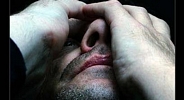|
|
 Acne (1,500) Acne (1,500)
 Addictions (1,500) Addictions (1,500)
 Advice (1,500) Advice (1,500)
 Allergies (1,092) Allergies (1,092)
 Alternative Medicine (1,500) Alternative Medicine (1,500)
 Anti Aging (1,500) Anti Aging (1,500)
 Breakup (1,500) Breakup (1,500)
 Cancer (1,499) Cancer (1,499)
 Dental Care (1,500) Dental Care (1,500)
 Disabilities (1,500) Disabilities (1,500)
 Divorce (1,500) Divorce (1,500)
 Elderly Care (1,498) Elderly Care (1,498)
 Goal Setting (1,500) Goal Setting (1,500)
 Hair Loss (1,500) Hair Loss (1,500)
 Health and Safety (1,497) Health and Safety (1,497)
 Hearing (1,500) Hearing (1,500)
 Law of Attraction (1,499) Law of Attraction (1,499)
 Marriage (1,500) Marriage (1,500)
 Medicine (1,497) Medicine (1,497)
 Meditation (1,499) Meditation (1,499)
 Men's Health (1,500) Men's Health (1,500)
 Mental Health (1,500) Mental Health (1,500)
 Motivational (1,500) Motivational (1,500)
 Nutrition (1,495) Nutrition (1,495)
 Personal Injury (1,499) Personal Injury (1,499)
 Plastic Surgeries (1,500) Plastic Surgeries (1,500)
 Pregnancy (1,496) Pregnancy (1,496)
 Psychology (1,500) Psychology (1,500)
 Public Speaking (1,500) Public Speaking (1,500)
 Quit Smoking (1,500) Quit Smoking (1,500)
 Religion (1,499) Religion (1,499)
 Self Help (1,500) Self Help (1,500)
 Skin Care (1,500) Skin Care (1,500)
 Sleep (1,500) Sleep (1,500)
 Stress Management (1,500) Stress Management (1,500)
 Teenagers (1,492) Teenagers (1,492)
 Time Management (1,500) Time Management (1,500)
 Weddings (1,500) Weddings (1,500)
 Wellness (1,500) Wellness (1,500)
 Women's Health (1,500) Women's Health (1,500)
 Women's Issues (1,500) Women's Issues (1,500)
|
Photorefractive Keratectomy (PRK) laser eye surgery has been safely used for several years. It's actually the forerunner of LASIK eye surgery.
Not everyone is a good candidate for LASIK eye surgery. Even though there have been many recent advances in LASIK, there are certain circumstances where PRK laser surgery is recommended over LASIK eye surgery. For instance, if the patient has large pupils or an unusalyy thin cornea, the doctor may suggest PRK.
PRK or LASIK - What's the Difference?
Your cornea is made up of layers. The top, or outer layer, called the epithelium, is soft and has the ability to heal quickly. The layer underneath is called the stroma - this does not regrow, and it's the area that's targeted by the LASIK procedure.
With LASIK eye surgery, a small flap is cut from the cornea, the flap is folded back out of the way and the laser reshapes beneath the surface of the cornea.
However, with PRK laser surgery, no flap is created, since the cornea itself is reshaped by removing thin layers of cells from the outer surface. The surgeon uses the laser to vaporize a portion of the epithelium to gain access to the stroma layer underneath.
Unlike LASIK eye surgery, which boasts a quick recovery time, PRK patients experience a longer recovery time. Also, you'll experience greater pain and discomfort after the procedure. You may even notice blurred or hazy vision for as long as two months after surgery. You won't actually see the results of the surgery until after this two month period.
Some Side Effects of PRK
It's common that PRK patients experience eye dryness and must use lubricating eye drops or artificial tears as a remedy. Also, the doctor will probably prescribe antibiotics to prevent possible infection. In many cases, night vision suffers, often becoming worse that before the PRK procedure, although daytime vision usually improves. Driving at night is not advised for the first few months, since glare and halo effects could cause safety concerns.
Since the PRK procedure actually removes a portion of the epithelium, patients usually are required to wear a temporary bandage contact lens for protection for five or six days, until the epithelium regenerates.
Advantages of PRK
About 80% of the patients who undergo PRK laser surgery no longer rely upon corrective lenses. PRK surgery is a safe procedure that boasts an impressive rate of success. If you've worn glasses or contact lenses for years, you'll be quite happy with your new, clear vision.
Remember, laser eye surgery is permanent, but as time goes by, your eyes can still change due to the natural aging process. Some doctors offer an inexpensive upgrade so that if you ever need the procedure repeated, it's done at no additional cost. If your at an age where your eyes are likely to be changing, say in your 40s or 50s, you should strongly consider this option.
When it comes to choosing between PRK and LASIK, it depends upon your personal circumstances. Your doctor will complete an eye exam and make the proper recommendation.
|
|
|



